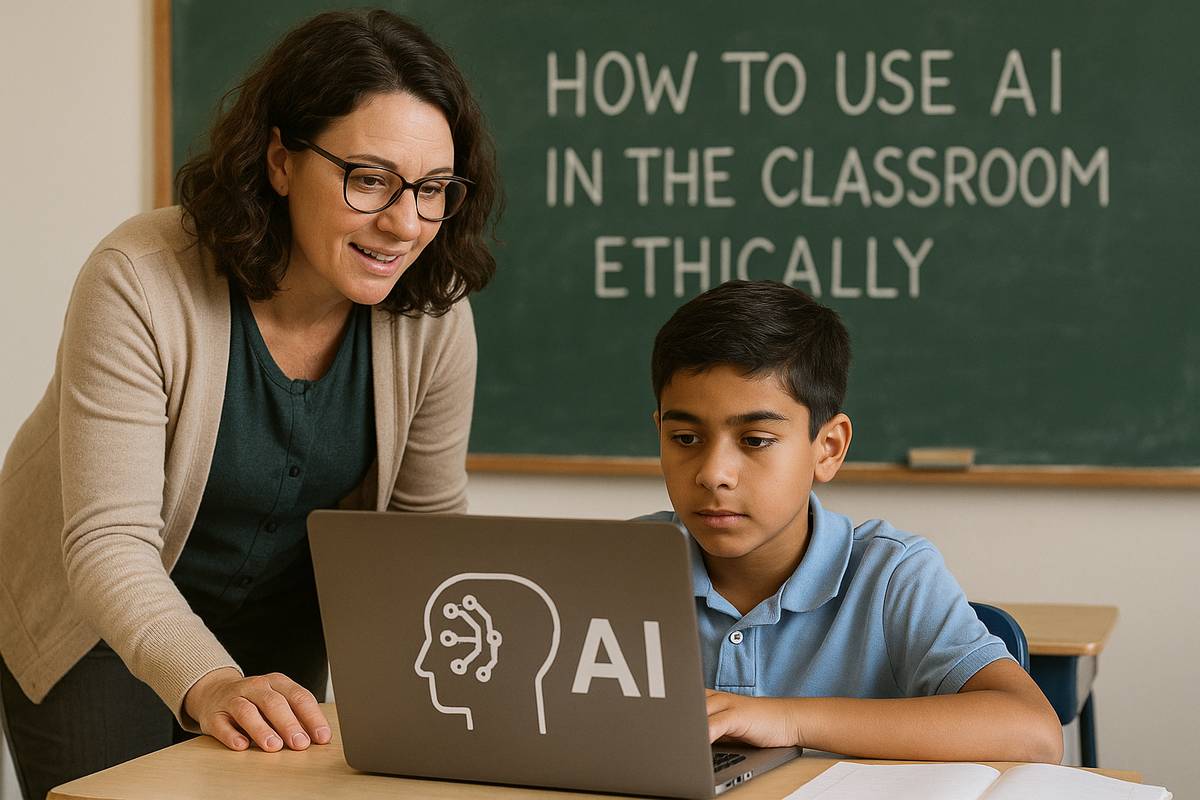Educators today stand at a crossroads with the rise of generative AI tools. We can usher in remarkable innovation or compromise values of fairness, privacy, and trust. From drafting writing prompts to assessing student work, AI has the potential to transform learning if it is used thoughtfully and ethically. To ensure such powerful tools support rather than replace genuine human learning, teachers must strike a balance between embracing new possibilities and preserving core principles.
The foundation of ethical AI use in education begins with transparency. When introducing an AI tool, explain how it works, what data it uses, and where it might fail. Making this clear helps students understand that AI is not always correct and encourages them to think critically. Students should learn to treat AI outputs as suggestions, not as final answers. This mindset builds curiosity and responsibility, empowering them to use AI as a learning partner instead of a shortcut.
Fairness should always guide the adoption of AI in classrooms. Because AI systems learn from human data, they can reflect human biases. Educators must test AI tools for fairness and inclusivity, ensuring that examples, questions, or content do not reinforce stereotypes. Encouraging open discussions about what feels fair or biased helps students develop awareness of ethical decision-making. It turns the classroom into a space where technology and empathy can coexist.
Privacy protection is another essential part of ethical AI use. Before introducing a tool, review its privacy and data policies. Ask if it stores student work, collects personal data, or shares information with others. Always prioritize platforms that protect anonymity and offer control over data sharing. Informing students and parents about how data will be handled promotes trust and accountability. It also teaches students to be responsible digital citizens who understand their rights.
Academic integrity remains a challenge in the age of AI. Rather than banning AI completely, educators can redesign assignments that emphasize thought processes instead of perfect outcomes. For example, students can be asked to reflect on how they used AI during their work or to show multiple drafts of their progress. This approach values originality and honesty, while still allowing AI to act as a tool for inspiration and improvement.
Professional development for teachers is crucial to maintaining ethical standards. Many educators feel unprepared to use AI effectively. Ongoing training and peer collaboration help teachers learn best practices, share experiences, and stay updated on policy changes. Schools that invest in AI literacy empower their teachers to lead by example, guiding students toward responsible innovation.
Above all, human connection must remain at the heart of education. AI can personalize learning paths or provide instant feedback, but it cannot replace the empathy, encouragement, and intuition of a teacher. The true goal of AI in the classroom is to assist, not dominate. By using it with care and clarity, educators can shape a generation that values both innovation and integrity.
When used transparently, fairly, and responsibly, AI becomes more than a technological trend. It becomes a bridge between creativity and critical thinking, helping students prepare for a future where ethics and innovation walk hand in hand.









